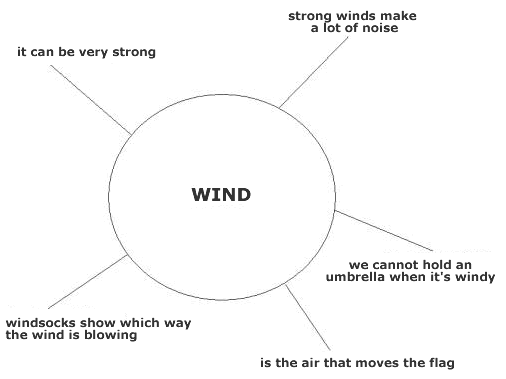Volume 8 Number 2
©The Author(s) 2006
Mapping Knowledge: Concept Maps in Early Childhood Education
Abstract
Graphic organizers such as webs, time lines, Venn diagrams, flowcharts, and concept maps are well known and widely used instructional and learning tools. They help teachers and students not only to identify and visually represent their views and knowledge but also to recognize and depict relationships among concepts. This article discusses the use of concept maps in early childhood education. In light of a theory that suggests that information is processed and stored in memory in both linguistic and visual forms, it is argued that concept maps can be used in early childhood classrooms to help children organize and spatially represent both what they know and what they are thinking. Once children learn how to “read” and make concept maps, teachers can also use them to identify children’s preexisting knowledge or misconceptions as well as use them as an evaluation tool. The article also considers the role of concept maps in teacher planning. Concept maps can help teachers to plan, structure, and sequence the content of their teaching. Finally, the article illustrates some of the issues involved in using concept maps with preschool children and suggests ways of introducing children to the process of constructing their own concept maps.
Introduction
According to the “dual-coding” theory of information storage (Paivio, 1991), information is processed and stored in memory in two forms: a linguistic form (words or statements) and a nonlinguistic, visual form (mental pictures or physical sensations). The way knowledge is coded in the brain has significant implications for teaching and particularly for the way we help students acquire and retain knowledge. As Marzano, Pickering, and Pollock (2001) point out, “the primary way we present new knowledge to students is linguistic. We either talk to them about the new content or have them read about it” (p. 73). The fact that education gives weight to the verbal processing of knowledge means that students are left to generate their own visual representations. Yet, it is well established that showing children how to represent information using the imagery form not only stimulates but also increases activity in the brain (Marzano, 1998). As students try to convey what they know and understand in nonlinear, visual ways, they are forced to draw together what they have learned; see how ideas, information, and concepts are connected; develop higher-order thinking skills (e.g., analytical thinking); and organize their knowledge in a way that makes sense to others. Visual representations also help students remember and recall information more easily.
Visual representations can be created and supported by tools such as graphic organizers, physical models, pictographs (i.e., symbolic pictures), and engaging students in kinesthetic activities, that is, activities that involve physical movement (Marzano, Pickering, & Pollock, 2001). From those, perhaps the most commonly used visual learning tool is graphic organizers, which include diagrams depicting hierarchical information (e.g., concept maps), time-sequence patterns (e.g., chain of events, time lines), cause-effect relationships (e.g., fishbone diagrams), comparisons (e.g., Venn diagrams), free associations and links among ideas (e.g., webs or mind maps), and how a series of events or stages are related to one another in a repeating process (e.g., life cycle diagrams). Graphic organizers help students not only to “read” and comprehend more easily complex information and relationships but also to generate ideas, structure their thoughts, and learn how to make visible, in an easy-to-read way, what they know. The latter requires that students understand the topic under study, be able to discern relationships between concepts, and prioritize information.
Most visual teaching methods are well suited to the learning needs of preschool children. Venn diagrams, event chains, time lines, and cycle diagrams can be used to illustrate differences and similarities (e.g., between animals or people), show the sequence of events in a story, describe the steps to be taken in a process (e.g., in order to create something), or show how events interact and repeat themselves (e.g., the water cycle). The most widely used method in early childhood education is webbing. An important element of the Project Approach, webs are graphic maps that are used by teachers to generate and sort what children know or would like to learn about a topic, concept, or theme and to stimulate questions and ideas for activities (Chard, 1998; Katz & Chard, 2000). Webs are also very useful project-planning devices that can help early childhood teachers to reflect on their own knowledge, experience, and resources as a basis for guiding the project; identify the key ideas and concepts that a topic comprises; see how different subject areas link to each other; and ponder possible actions (Katz & Chard, 2000; Workman & Anziano, 1993; Wray, 1999).
Another effective way to help children represent what they know and understand in visual forms, which is however less used in early childhood classrooms, is concept maps. With the current emphasis on teaching for understanding and the importance of conceptual knowledge, teachers need techniques that help children see patterns and connections (rather than memorize facts) and form mental structures that would help them handle new knowledge and relate it to past knowledge (Erickson, 2002). While webs are mainly a graphic representation of the ideas associated with a topic, concept maps generally illustrate the kind of relationships that exists between information. That is why concept maps, as explained in more detail later, are often organized in a hierarchical way. In webs, the topic or the concept under study is usually found in a circle in the middle of a piece of paper, surrounded by ideas, questions, or words, often loosely connected to each other.
Concept Maps
Concept maps were developed in the early 1970s at Cornell University by Novak and his research group (Novak, 1998). They are constructed to represent visually “meaningful relationships among concepts in the form of propositions” (Novak & Gowin, 1984, p. 15). As Novak and Cañas (2006) explain, “propositions are statements about some object or event in the universe, either naturally occurring or constructed. Propositions contain two or more concepts connected using linking words or phrases to form a meaningful statement” (p. 1). The propositions are the element that makes concept maps different from other similar graphic organizers (e.g., mind maps).
In other words, concept maps are “the spatial representations of concepts and their interrelationships that are intended to represent the knowledge structures that humans store in their minds” (Jonassen, Reeves, Hong, Harvey, & Peters, 1997, as cited in McAleese, 1998, p. 258). In its simplest form, a concept map would be just two concepts connected by a linking word to form a proposition (Novak & Gowin, 1984, p. 15)—for example, “seeds grow into plants.” Another example of a simple concept map is shown in Figure 1. However, Novak and Gowin (1984, pp. 15-16) argue that “because meaningful learning proceeds most easily when new concepts or concept meanings are subsumed under broader, more inclusive concepts, concept maps should be organized in a hierarchical way; that is, the more general, more inclusive concepts should be at the top of the map, with progressively more specific, less inclusive concepts arranged below them” (Figure 2).
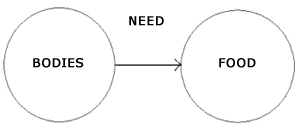
Figure
1. An example of a simple concept map. 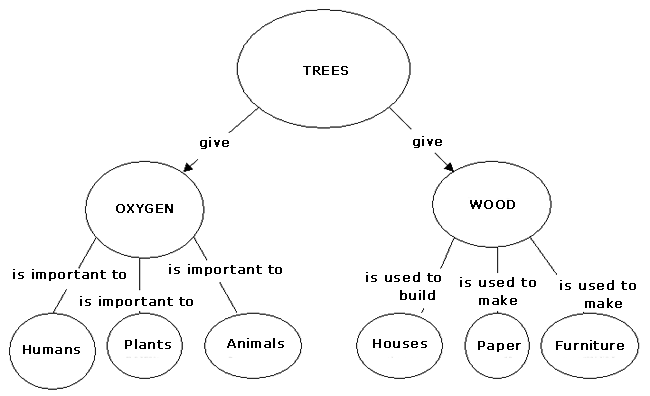
Figure 2. A concept map organized hierarchically.
Both simple and more complex concept maps consist of two things: concepts and the relationships among them. Concepts are usually represented as labeled circles or boxes, which are called “nodes.” Relationships, on the other hand, are represented as lines (or else arcs) or arrows connecting the concepts. Lines are usually labeled with verbs in order to specify the relationships between concepts, while arrows are used to show the direction of the relationship (e.g., one-way or two-way). As concepts are connected through links, they form the statements that Novak and Gowin refer to as propositions.
Concept maps can facilitate teaching and learning in several ways. First, as their inspirers note, they can help both teachers and students to identify the key concepts and principles that they must focus on for any specific learning task (Novak & Gowin, 1984, p. 15). Second, a concept map can provide “a kind of visual road map” indicating some of the pathways that teachers may take “to connect meanings of concepts in propositions” (Novak & Gowin, 1984, p. 15). Third, concept maps can provide a graphical summary of what students have learned, which in turn can help teachers detect and eventually break down students’ misconceptions and misunderstandings.
Concept maps are also effective in helping teachers identify students’ prior knowledge and understandings and organize teaching and learning in a way that is meaningful to them. In fact, identifying students’ preexisting knowledge was the aim that led Novak and his team to the construction of the first concept map (Novak, 1998). Last, but not least, once students learn how to externalize their understanding and create concept maps, their maps can be used as a way to monitor their conceptual development and assess their understanding and knowledge.
Summing up the purposes for using concept maps, as presented above, one could reasonably argue that they are mainly a representation of what people know and understand. Although concepts maps can indeed help structure and display people’s knowledge, for some researchers, they are more than a tool for the “representation of cognitive structures.” More specifically, according to McAleese (1998), another important function of concept maps is that they “allow off-loading of thinking and show the result of engaging in knowledge construction” (p. 258). Within this framework, as he goes on to say, concepts maps are seen as “an opportunity to engage learners in the process of their learning” (p. 258). In the same vein, Maxwell (1996, citing Howard & Barton, 1986) argues that concept maps can be seen as a “way of thinking on paper,” a process that can show students “unexpected connections or identify holes or contradictions in their ‘theory’ and help them to figure out ways to resolve them” (p. 37). If thinking is done in collaboration with others, then concept maps facilitate not only social interaction and communication but also the development of shared understanding.
Concept maps can be constructed either by hand or using specific software programs. The main benefit of using a computer is that concepts and links can be easily manipulated and updated while the format can be modified or enhanced visually by inserting colorful symbols, pictures, connectors, or clip art (Dormer, n.d.). Another advantage of concept-mapping software is that it offers ready-made templates of different types of concept maps (e.g., of different hierarchical structures) to be used in various curriculum areas. Because of those characteristics, computer-based concept mapping is gaining ground as a popular alternative to the traditional paper-and-pencil concept-mapping method.
Concept Maps in Early Childhood Education
Although there is a large developing body of literature on concept mapping as an instructional and learning tool in elementary, secondary, and higher education, little has yet been written about the use of concept maps (or graphic organizers in general) in early childhood education (McAleese, 1998, 1999; Novak, 1998; Santhanam, Leach, & Dawson, 1998; Zanting, Verloop, & Vermunt, 2003). Perhaps the assumption is that preschool children do not yet have the ability to use various types of representations (e.g., networks of propositions or words, sequence of events in time and space). However, current knowledge about early learning emphasizes children’s capacity to represent knowledge that is presented in ways that are developmentally appropriate (Smith, Cowie, & Blades, 2001). The few studies that have investigated the use of concept maps in preschool education seem to suggest the same thing: if introduced and used in developmentally appropriate ways, concept mapping is particularly effective in helping children see and externalize the relationships among concepts (Alí Arroyo, 2004; Badilla, 2004; Figueiredo, Lopes, Firmino, & de Sousa, 2004; Mancinelli, Gentili, Priori, & Valitutti, 2004). For example, Mancinelli et al. (2004) used object manipulation, clinical interviews, conversation, and drawings to help 4- to 5-year-old children to build their own concept map about the process of making papier-mâché. Figueiredo et al. (2004) helped children from 3 to 5 years old to represent the “things we know about the cow” using discussion and real objects (which they gradually replaced with pictures) and providing them with map templates in order to help them put concepts in a hierarchical structure (e.g., the cow gives us milk from which we make yogurt, cheese, butter, etc.). Two more examples of using concept maps with young children come from Nancy Gallenstein (2005, p. 46), who helped kindergarten children “share their knowledge about good nutrition” using both objects and pictures; and Badilla (2004), who used pictures to help 5- to 6-year-old children generate a concept map about “the house” and understand certain characteristics of concept maps such as their hierarchical structure and the possibility of linking different concepts in different ways.
Concept maps in early childhood education can be used by teachers and children alike. As a teaching tool, concept maps can be used to help children clarify, organize, relate, and group ideas and information about a topic. In doing so, children learn another way of representing and communicating what they know. In addition, concept maps help children to literally see relationships among concepts and remember information more easily. Moreover, concept maps, like webs, allow children to revisit them and expand them. As children go back again and again, the teacher can see how new knowledge is integrated with old knowledge and diagnose misunderstandings. The latter is very important since, as Ausubel, Novak, and Hanesian (1978) argue, preconceptions (and misconceptions) are crucial for the quality of subsequent learning. Missed relationships and concepts, in particular, as well as wrong connections, can tell teachers a lot about children’s conceptions and comprehension of the topic under discussion. To rectify misconceptions, the teacher can provide children with opportunities to apply the concepts under study in different contexts or ask questions that force children to review their conceptions critically.
Concept maps can also be used to organize teaching or the entire curriculum. As a planning tool, they can help teachers plan, structure, and sequence the content of their teaching. As they create a map of what they want to teach, teachers can see how different themes and topics are linked, so continuity of experience is ensured, and develop units and activities that integrate different subjects.
Clearly, if concept maps are to fulfill their potential as a teaching tool, preschool children’s needs and cognitive abilities need to be taken into consideration. More specifically, early childhood educators interested in using concept maps should keep in mind the following:
- Obviously, young children are not going to be in a position immediately to construct a concept map on their own. In fact, as Sparks Linfield and Warwick (2003) point out, young children need to be taught the technique of concept mapping, and therefore a period of direct instruction is necessary before children can successfully construct their own concept maps (Ferry, 1997). This process should start by having children observe their teacher creating concept maps.
- When modeling the process of concept map creation, teachers should give particular emphasis to the linking or “joining” words and help children understand that “they are what makes the whole thing have meaning” (Sparks Linfield & Warwick, 2003, p. 126). Those words help create the propositions, the main characteristic of concept maps.
- Concept maps should be introduced after children have had many opportunities to manipulate real objects, observe what is going on around them, record their observations, and communicate their findings and impressions in different ways. Having those experiences is important because it is through these experiences that concepts and generalizations are formed (Mancinelli, Gentili, Priori, & Valitutti, 2004). Concrete experiences are also crucial for the development of representational thinking. For example, children must have observed plants needing to be watered and seen for themselves what happens to be able to represent graphically the relationship “plants need water.” It is also better to introduce concept maps after children have had some experience with simple, less-structured graphic organizers such as webs as a way of summarizing and presenting information.
- Children’s first attempt to create a concept map should be done within the context of a simple, familiar topic (e.g., animals or plants) and using a small number of concepts (e.g., 2 to 4). In addition, as Sparks Linfield and Warwick (2003) suggest, with young children it “would be more sensible to simplify concept mapping, making it a method of showing links between concepts but ignoring the hierarchical structure of those concepts” (p. 125). Figures 3 and 4 show two examples of the kind of concept map that Sparks Linfield and Warwick are referring to. Their argument is supported by the findings of a study conducted by Figueiredo et al. (2004), which suggests that kindergarten children find it difficult to depict even simple hierarchical relationships without a visual aid, namely a map template (with boxes and lines).

Figure 3. An example of a concept map using a
simple, familiar topic. 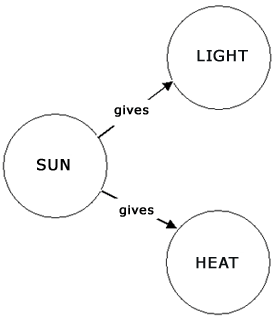
Figure 4. Another example of a simple concept map.
- To better familiarize children with concept maps, pictures (or photos or drawing images) can replace text labels (words) because children of this age communicate their ideas better through symbols (Pearson & Somekh, 2003). Drawings or pictures can also be used by and for children who speak a different language or have reading or writing problems (Pearson & Somekh, 2003). One difficulty with using children’s drawings is that if they are not clear (because of children’s limited drawing skills), it will be difficult for children to remember their representations if they need to revisit their maps (Gomez, 2005). Teachers who work with 4- and 5-year-olds should also consider that, as research on children’s graphic development suggests, at this stage the objects depicted in children’s drawing “typically appear to ‘float’ on the page” and are “seldom drawn in relationship to another in position or size” (“Young in Art,” n.d.). To differentiate the hierarchical levels or to show the reading order of the map, teachers can help children assign numbers to their symbols (Mancinelli, Gentili, Priori, & Valitutti, 2004). Concept maps based on children’s drawings look more like “real” concept maps around the age of 5 or 6, when most children have acquired not only a larger “repertoire” of graphic equivalents for the things that they see around them but also a better sense of how things can be organized in space (“Young in Art,” n.d.). Depending on children’s ages and previous experience with concept maps, teachers can also use real objects to represent concepts and relationships. As children become better readers and writers, simple words can replace objects, drawings, or pictures. In any case, the important thing is to help children see and understand that concepts (objects or pictures) are linked to form meaningful statements and that relationships between concepts can be represented graphically.
Figure 5 summarizes the steps that teachers can take to model the creation of a concept map (adapted from Novak & Gowin, 1984; White & Gunstone, 1992).
- Select the key concepts of the topic under study (e.g., sun and earth, sun and heat) after discussing with children “what we have seen or learned.”
- On a large piece of paper or the board, write or draw (or use pictures or photos) the key concepts (leave enough space between them so that the connecting lines are long enough to be seen and can have words written on them). Next, put words or pictures in large circles or boxes (concepts could also be written on 3-x-5 cards).
- Connect the concepts (circles) with a line (or an arrow depending on the relationship you want to represent). As you link the two concepts, state in a simple and short sentence the relationship between them (e.g., “So, we’ve learned that the sun warms the earth” or “The sun gives heat”). This allows children to “see” and “follow” your thinking. Label the line using simple action words (e.g., warms, gives, needs, becomes) that specify the relationship between the concepts. Write the connecting word (e.g., warms) on the line. Use different colors for circles and links to help children see these as different types of information.
- Encourage children to “read” the map on their own (or else recite the sentence).
- Have children copy the map from the board.
Figure 5. Steps in modeling the creation of a concept map.
After modeling the process of creating concept maps several times and before teachers move into encouraging children to construct their own concept maps “from scratch,” there could be another stage where children practice interacting with (rather than constructing) different types of “incomplete” maps (Noyd, 1998). Those include "concept-only" maps, where key concept words are identified and pre-structured on the map and children are asked to fill in the missing propositions and direction arrows in the spaces provided; and "link-only" maps, where key relationships/propositions are already pre-structured and labeled on maps and children are asked to fill in the missing concept words in the spaces provided (Yung, 1997).
When children are ready to build their first concept map, it is perhaps better if this happens in the context of a project rather than during a “one-off” teacher-structured activity. This strategy would help children to see concept maps as a way of organizing information received from different sources and summarizing what they are learning (Novak & Gowin, 1984). It is also advisable to start with a linear rather than a hierarchical concept map. The following steps outline the procedure when teaching children how to construct a concept map:
- During group discussion, the teacher asks children to talk about the things they have learned through the exploration of the topic under study (e.g., “through our field trip, we learned that bread is made of wheat” or “we show that all families have rules”). As children talk, the teacher writes down in ready-made paper circles the key concepts arising from children’s observations and ideas (e.g., “bread” and “wheat,” “families” and “rules”). Circles should be large enough for children to draw on the side of each word a picture that symbolizes the specific concept. In this way, concepts can be “read” by everybody no matter their communicative and linguistic capacities.
- Next, circles are put on the floor, and children are asked to arrange them in a simple sentence that expresses the relationship between them. Once children have identified the relationship between the concepts and created their sentences, circles can be glued on a large piece of paper so links can be drawn.
- Finally, children are prompted to show the relationship between the concepts by connecting them with lines (or arrows if needed). Then, the teacher (or children themselves) can write the action word (verb) that completes the proposition.
As children engage in the process of creating a concept map, early childhood teachers should keep in mind that concept mapping is a creative activity in which “the learner must exert effort to clarify meanings by identifying important concepts, relationships, and structure within a specified domain of knowledge” (Cañas, 2003, citing Novak & Gowin, 1984, p. 22). Within this framework, teachers should enhance and support children’s thinking through questions that prompt for justification, request clarification, encourage connections among concepts and ideas, and provoke more questions on the part of the children (Cañas, 2003).
Finally, it is also important for children to see that concept maps are not “an end in themselves.” Rather, they are a tool for developing relationships and making them more explicit. To show them that concept maps are not static statements or just pictures, teachers should encourage children to go back and rework them (add or change concepts or links) as their understanding of the concepts they are working on develops or as they gain new knowledge or insights (Maxwell, 1996; Novak, 1998). As children do so, teachers can check their conceptual understanding. In practice, this means that concept maps should stay in view, and within easy reach of the children, from the day they are constructed until the day the teacher judges that they are not needed any more.
Summary
In sum, concept maps are a useful instructional tool even in preschool education. Concept maps can be used to help children see concepts and the relationships between them and externalize their ideas. They also help teachers to assess children’s conceptual development and understanding, identify misconceptions, and facilitate learning by building new knowledge on old knowledge. In preschool education, direct instruction and modeling of concept map creation are needed in order for children to see their purpose and eventually create their own concept maps. Once familiar with the idea and the process, children can construct their own maps either individually or collaboratively.
References
Alí Arroyo, Elizabeth. (2004). Desarrollo de mapas conceptuales con niños de kinder y primer grado [The development of concept maps with children in kindergarten and first grade]. In Alberto J. Cañas, Joseph D. Novak, & Fermín M. Gonzalez (Eds.), Proceedings of the 1st International Conference on Concept Mapping. Pamplona, Spain: Universidad Pública de Navarra. Retrieved March 28, 2006, from http://cmc.ihmc.us/CMC2004Programa.html
Ausubel, David P.; Novak, Joseph D.; & Hanesian, Helen. (1978). Educational psychology: A cognitive view. New York: Holt, Rinehart & Winston.
Badilla, Sonia. (2004, Septiembre 3-4). Experiencia pedagógica: mapas conceptuales en preescolar [Teaching experience: Concept maps in preschool]. In Memorias V Congreso Nacional de Educadores, Programa Nacional de Informática Educativa MEP-FOD (Preescolar, I y II Ciclos), San José, Costa Rica. Retrieved March 28, 2006, from http://www.fod.ac.cr/Vcongreso/CronoPonencias.htm
Cañas, Alberto
J. (2003). A summary of literature
pertaining to the use of concept mapping techniques and technologies for
education and performance support. Pensacola, FL: Institute for Human and
Machine Cognition. Retrieved November 12, 2005, from http://www.ihmc.us/users/acanas/Publications/ConceptMapLitReview/
IHMC%20Literature%20Review%20on%20Concept%20Mapping.pdf
Chard, Sylvia C. (1998). On webbing. In Judy Harris Helm (Ed.), The project approach catalog 2. Champaign, IL: ERIC Clearinghouse on Elementary and Early Childhood Education. Retrieved October 4, 2005, from http://ecap.crc.illinois.edu/eecearchive/books/projcat2/listserv.html
Dormer, Stephanie. (n.d.). Concept mapping. Tuggeranong, Australian Capital Territory: ACT Centre for Teaching and Learning. Retrieved November 5, 2005, from http://activated.det.act.gov.au/learning/word/elt/7.0_ConceptMapping.pdf
Erickson, H. Lynn. (2002). Concept-based curriculum and instruction: Teaching beyond the facts. Thousand Oaks, CA: Corwin Press.
Ferry, Brian. (1997). Using concept maps to help students organize the content of your lectures. University of Wollongong Overview, 4(1), 3-8. Retrieved July 10, 2006, from http://cedir.uow.edu.au/CEDIR/overview/overviewv4n2/ferry.html
Figueiredo, Maria; Lopes, Ana Sofia; Firmino, Rute; & de Sousa, Salomé. (2004). “Things we know about the cow”: Concept mapping in a preschool setting. In Alberto J. Cañas, Joseph D. Novak, & Fermín M. Gonzalez (Eds.), Proceedings of the 1st International Conference on Concept Mapping. Pamplona, Spain: Universidad Pública de Navarra. Retrieved November 2, 2005, from http://www.cmc.ihmc.us/papers/cmc2004-038.pdf
Gallenstein, Nancy L. (2005). Never too young for a concept map. Science and Children, 43(1), 44-47.
Gomez, Gloria. (2005). Young children’s use of a voice-input device to transform their symbolic maps into concept maps.National Institute for Design Research, Swinburne University of Technology. Retrieved March 28, 2006, from http://www.decs.sa.gov.au/octf/files/links/4_13_ggomez_octf2005.doc
Howard V. A., & Barton, J. H. (1986). Thinking on paper. New York: W. Morrow.
Jonassen, David H.; Reeves, Thomas C.; Hong, Namsoo; Harvey, Douglas; & Peters, Karen. (1997). Concept mapping as cognitive learning and assessment tools. Journal of Interactive Learning Research, 8(3-4), 289-308.
Katz, Lilian G., & Chard, Sylvia C. (2000). Engaging children's minds: The project approach (2nd ed.). Stamford, CT: Ablex.
Mancinelli, Cesarina; Gentili, Marina; Priori, Giuseppina; & Valitutti, Giuseppe. (2004). Concept maps in kindergarten. In Alberto J. Cañas, Joseph D. Novak, & Fermín M. Gonzalez (Eds.), Proceedings of the 1st International Conference on Concept Mapping. Pamplona, Spain: Universidad Pública de Navarra. Retrieved November 2, 2005, from http://www.cmc.ihmc.us/papers/cmc2004-195.pdf
Marzano, Robert J. (1998). A theory-based meta-analysis of research on instruction. Aurora, CO: Mid-continent Educational Research Laboratory. Retrieved November 12, 2005, from http://www.mcrel.org/PDF/Instruction/5982RR_InstructionMeta_Analysis.pdf
Marzano, Robert J.; Pickering, Debra J.; & Pollock, Jane E. (2001). Classroom instruction that works. Research-based strategies for increasing student achievement. Alexandria, VA: Association for Supervision and Curriculum Development.
Maxwell, Joseph A. (1996). Qualitative research design: An interactive approach. Thousand Oaks, CA: Sage.
McAleese, Ray. (1998). The knowledge arena as an extension to the concept map: Reflection in action. Interactive Learning Environments, 6(3), 251-272.
McAleese, Ray. (1999). Concept mapping—a critical review. Innovation in Education and Training International, 36(4), 351-360.
Novak, Joseph D. (1998). Learning, creating, and using knowledge: Concept maps as facilitative tools in schools and corporations. Mahwah, NJ: Erlbaum.
Novak, Joseph D., & Cañas, Alberto J. (2006). The theory underlying concept maps and how to construct them (Technical report IHMC CmapTools 2006-01). Pensacola: Florida Institute for Human and Machine Cognition (IHMC). Retrieved October 22, 2005, from http://cmap.ihmc.us/Publications/ResearchPapers/TheoryUnderlyingConceptMaps.pdf
Novak, Joseph D., & Gowin, D. Bob. (1984). Learning how to learn. Cambridge: Cambridge University Press.
Noyd, Robert. (1998). A primer on concept maps. USAFA Educator, 7(1). Retrieved March 31, 2006, from http://academic.wsc.edu/frc/innovations.htm
Paivio, Allan. (1991). Dual coding theory: Retrospect and current status. Canadian Journal of Psychology, 45(3), 255-287.
Pearson, Matthew, & Somekh, Bridget. (2003). Concept-mapping as a research tool: A study of primary children’s representations of information and communication technologies (ICT). Education and Information Technologies, 8(1), 5-22.
Santhanam, Elizabeth; Leach, Carolyn; & Dawson, Chris. (1998). Concept mapping: How should it be introduced, and is there evidence for long term benefit? Higher Education, 35(3), 317-328.
Smith, Peter K.; Cowie, Helen; & Blades, Mark. (2001). Understanding children’s development (3rd ed.). Oxford: Blackwell.
Sparks Linfield, Rachel, & Warwick, Paul. (2003). “Is it like the school bus?” Assessment in the early years. In David Whitebread (Ed.), Teaching and learning in the early years (2nd ed., pp. 117-136). London: RoutledgeFalmer.
White, Richard, & Gunstone, Richard. (1992). Probing understanding. New York: Falmer Press.
Workman, Susan, & Anziano, Michael C. (1993). Curriculum webs: Weaving connections from children to teachers. Young Children, 48(2), 4-9.
Wray, David. (1999). Inquiry in the classroom: Creating it, encouraging it, enjoying it. Toronto: Pippin.
Young in art. (n.d.). Retrieved April 1, 2006, from http://www.arts.ufl.edu/art/rt_room/teach/young_in_art/sequence/pre-symbolism.html
Yung, Hin-wai. (1997). Using concept maps to establish meaningful relationships. University of Hong Kong, Department of Curriculum and Instruction. Retrieved November 12, 2005, from http://www.fed.cuhk.edu.hk/~johnson/misconceptions/ce/learn/concept_map.htm
Zanting, Anneke; Verloop, Nico; & Vermunt, Jan D. (2003). Using interviews and concept maps to access mentor teachers’ practical knowledge. Higher Education, 46(2), 195-214.
Author Information
Maria Birbili is a lecturer in the Department of Early Childhood Education at Aristotle University of Thessaloniki, Greece. She teaches early childhood issues and is involved in the planning, designing, and assessment of student teachers’ field experiences. Current research interests include the use of graphic organizers in preschool education, the development of questioning skills in early childhood educators, and the use of portfolios for assessing young children’s learning and development.
Maria Birbili
Department of Early
Childhood Education
Aristotle University of
Thessaloniki
Pirgos, Office No 617
541 24, Thessaloniki
Greece
Telephone: +2310-991273
Fax: +2310-995098
Email: mmpirmpi@nured.auth.gr
Chain of Events
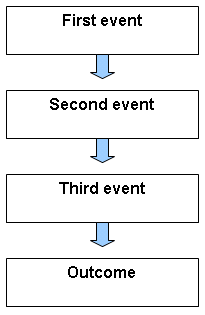
Fishbone
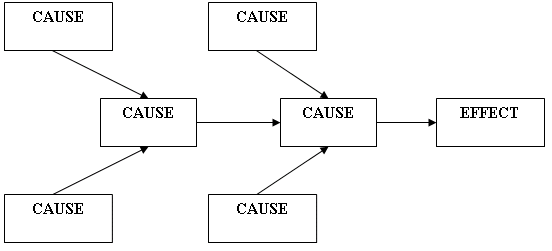
Venn Diagram
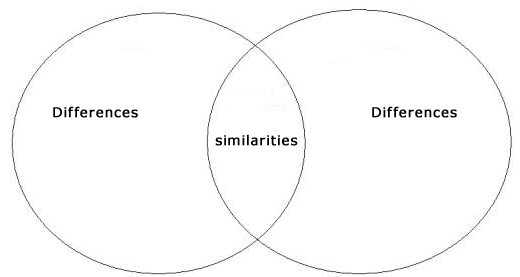
Web
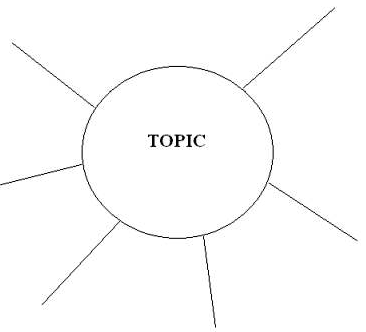
Life Cycle
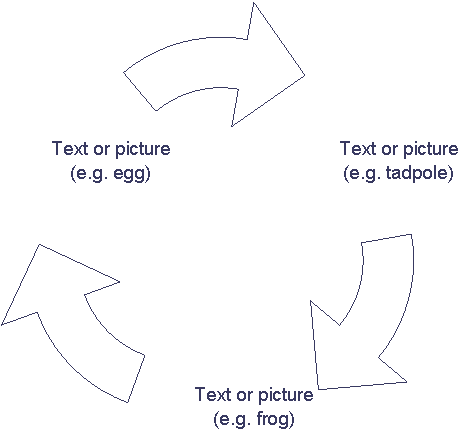
Generate and Sort
